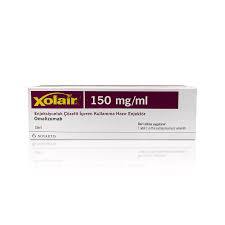Xalkori
Xalkori is classified as a small-molecule inhibitor characterized by a complex chemical structure aimed at inhibiting tyrosine kinases, particularly ALK and ROS1.

Pharmacology:
Bioavailability: The oral bioavailability of crizotinib is notably high, although the precise percentage remains undefined due to patient variability.
Half-life: The average elimination half-life of crizotinib is around 42 hours.
Metabolism: Crizotinib undergoes primary metabolism in the liver, predominantly via the enzyme CYP3A4.
Excretion: The drug is eliminated primarily through feces (approximately 63%) and urine (about 22%), mainly in the form of metabolites.
Molecular Formula:
C21H22Cl2FN5O
Molecular Weight:
450.34 g/mol
Chemical Structure:
Clinical Trials and Efficacy:
ALK-positive NSCLC: Clinical trials, including the PROFILE series (PROFILE 1001, PROFILE 1005, PROFILE 1014), have shown substantial efficacy in patients with ALK–positive NSCLC, indicating improvements in progression–free survival (PFS) and overall response rates (ORR).
ROS1-positive NSCLC: Research has demonstrated that crizotinib exhibits comparable efficacy in patients with ROS1 rearrangements, resulting in significant tumor reduction and disease management.
Adverse Effects:
Very Common (≥10%):
Hematologic: Neutropenia, anemia, lymphopenia
Gastrointestinal: Nausea, diarrhea, vomiting, constipation
Hepatic: Increased transaminases (AST, ALT)
Ocular: Visual disturbances (blurred vision, photophobia)
Metabolic: Hypokalemia, hypophosphatemia
Cardiovascular: Bradycardia, edema
General: Fatigue, reduced appetite
Common (1-10%):
Respiratory: Cough, dyspnea
Musculoskeletal: Arthralgia, back pain
Infections: Upper respiratory infections
Rare (<1%):
Interstitial Lung Disease: A serious condition necessitating immediate cessation of the drug.
QT prolongation: Heightened risk of torsades de pointes.
Severe visual loss: Although infrequent, complete loss of vision has been documented.
Contraindications:
There are no absolute contraindications aside from hypersensitivity to crizotinib or its components. Nonetheless, caution is recommended for patients with:
Severe hepatic impairment
Cardiac dysfunction (including heart failure, bradycardia, QT prolongation)
Special Populations:
Pregnancy:
Crizotinib poses a risk to a developing fetus; therefore, effective contraception is essential during treatment and for a minimum of 45 days post-treatment for women, and 90 days for men.
Breastfeeding:
It is advised against breastfeeding while on crizotinib, as the drug may transfer into breast milk and potentially harm an infant.
Pediatrics:
The safety and effectiveness of Xalkori in pediatric patients remain unverified.
Geriatrics:
While no specific dosage adjustments are necessary based solely on age, older adults may exhibit increased sensitivity to certain adverse effects, including bradycardia and edema.
Drug-Drug Interactions:
CYP3A Inhibitors (e.g., ketoconazole, itraconazole):
These may elevate crizotinib plasma levels, increasing the likelihood of side effects.
CYP3A Inducers (e.g., rifampin, phenytoin):
These can lower crizotinib concentrations, potentially diminishing its effectiveness.
Drugs Affecting QT Interval (e.g., antiarrhythmics, antipsychotics):
Concurrent use may heighten the risk of QT prolongation.
Anticoagulants (e.g., warfarin):
Regular INR monitoring is recommended due to possible interactions.
Monitoring Requirements:
Liver Function Tests: Initial and ongoing assessments are necessary, as hepatotoxicity may arise.
ECG Monitoring: Essential for detecting QT prolongation and heart rhythm alterations, especially in patients with pre-existing cardiac conditions.
Complete Blood Counts (CBC): Regular evaluations are crucial due to the risk of neutropenia and anemia.
Electrolytes: Monitoring of potassium, magnesium, and calcium levels is important due to potential imbalances.
Ophthalmologic Exams: Recommended for patients experiencing vision disturbances.
Patient Counseling Information:
Vision Changes: Patients should be informed about the potential for visual disturbances and encouraged to report any severe or persistent vision issues.
Symptoms of Liver Problems: Patients should be vigilant for signs such as jaundice, dark urine, or severe abdominal discomfort.
Heart Rhythm Indicators: It is imperative for patients to promptly communicate any occurrences of dizziness, palpitations, or episodes of syncope (fainting).
Pregnancy Considerations: Patients should be thoroughly educated about the potential risks of teratogenic effects and the importance of maintaining effective contraception.
Adherence to Medication: It is essential to administer Xalkori precisely as directed, refraining from any dosage modifications without prior consultation with a healthcare professional.
Regulatory Approval: Xalkori holds the distinction of being an FDA-approved medication, with endorsements from various global regulatory authorities, including the European Medicines Agency (EMA).
Research and Innovation: Crizotinib is currently under investigation for its efficacy against additional cancer types and various molecular targets. This research has laid the groundwork for the emergence of next-generation ALK inhibitors, which may offer enhanced effectiveness and diminished resistance.
This information presents a detailed perspective on Xalkori’s profile, highlighting its clinical application, safety considerations, and pharmacological characteristics. For the most personalized and precise medical advice, always consult the prescribing healthcare provider or refer to the official prescribing information.


